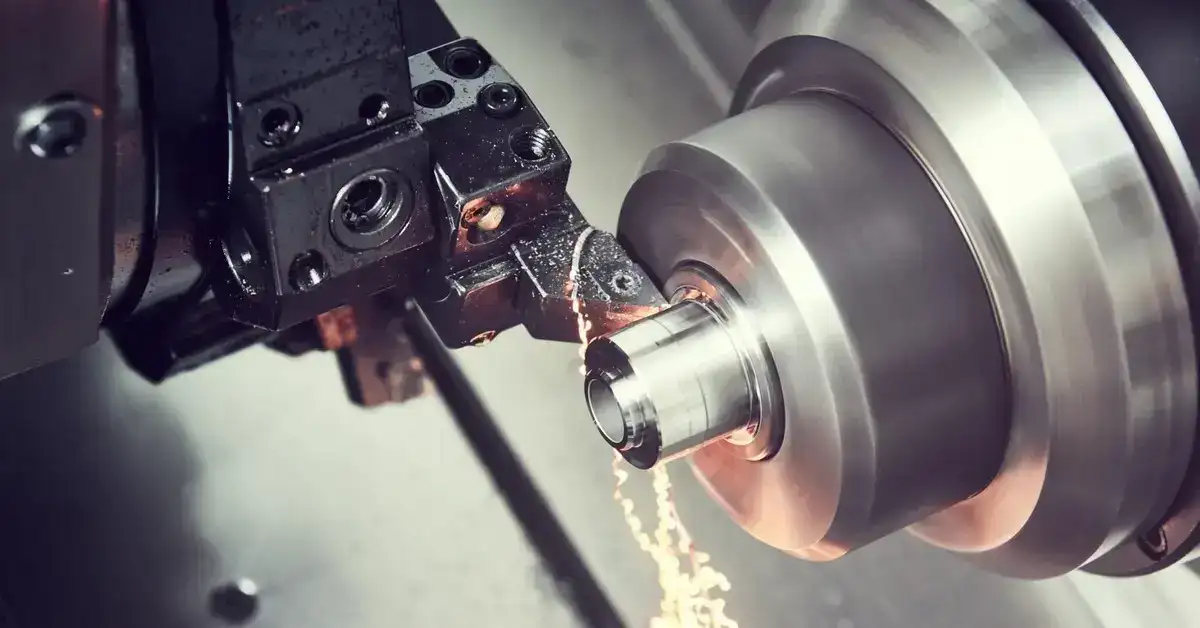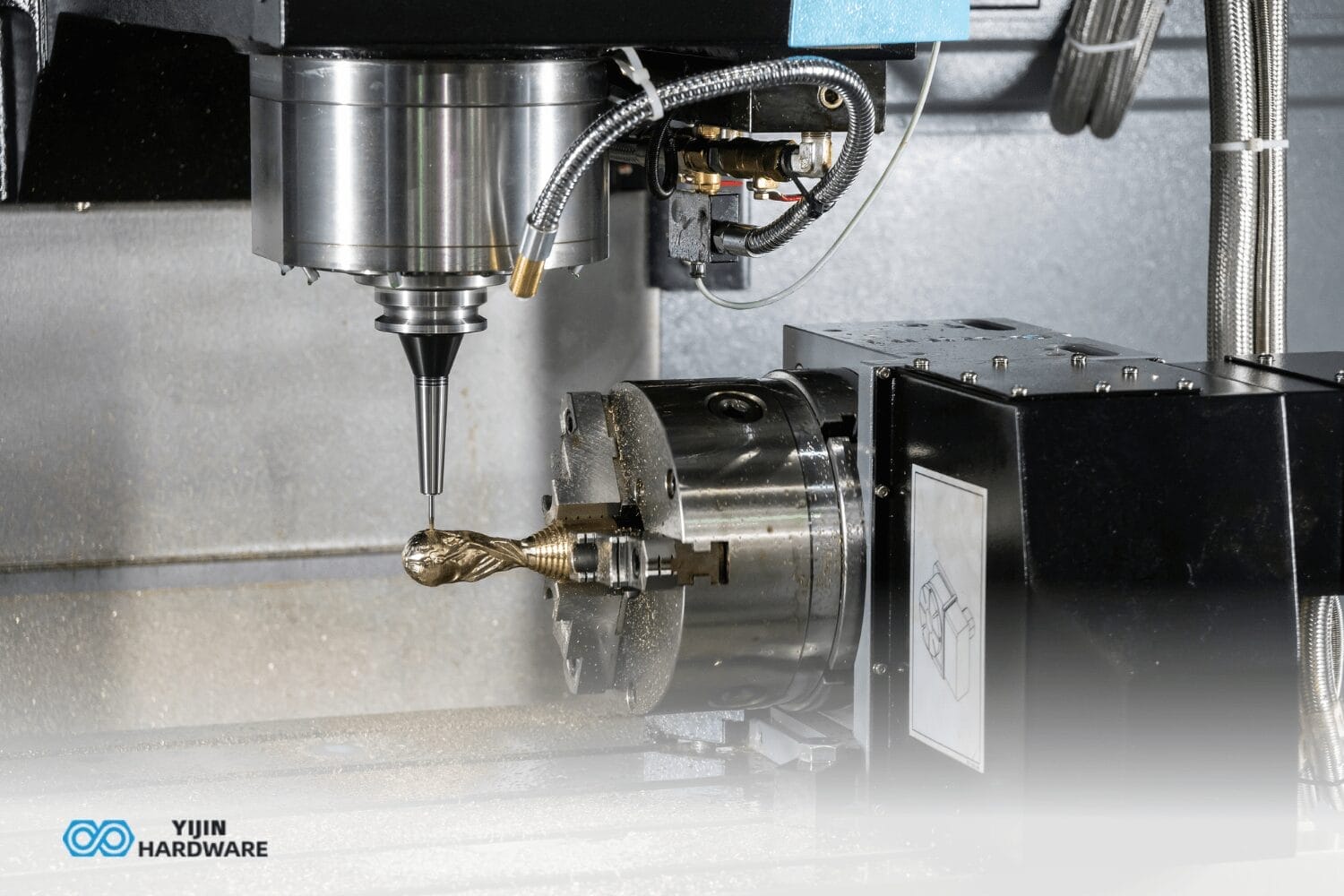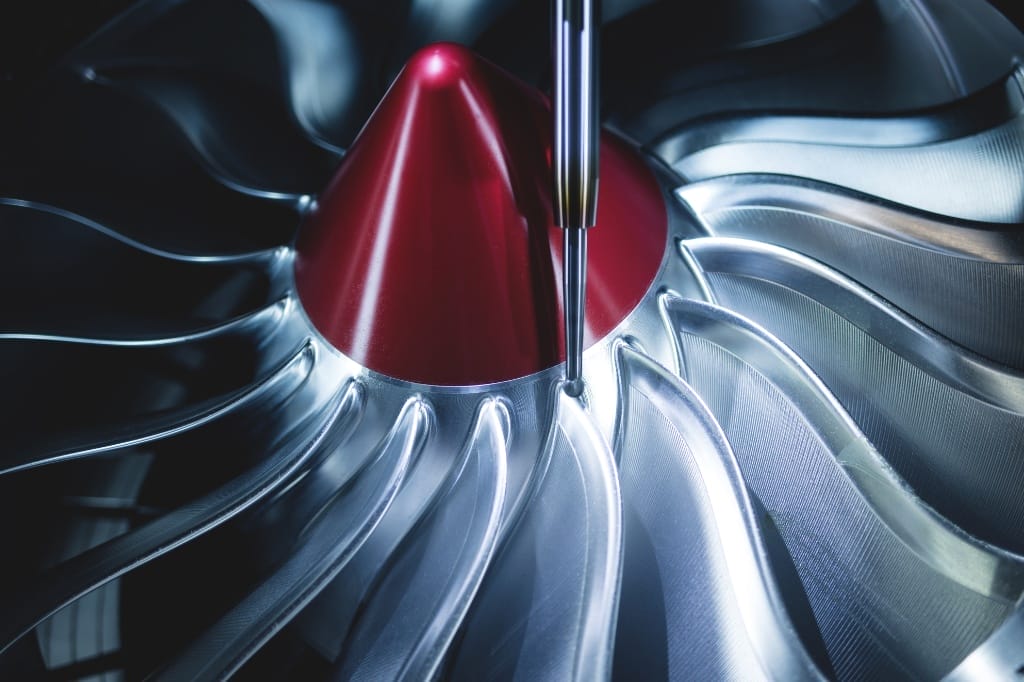Manufacturing utilizes various types of machining processes that each come with their benefits and uses. These processes enable manufacturers to produce a range of products with accuracy. The machining manufacturing process can be divided into two groups: Traditional Machining and Unconventional Machining Processes:
7 Types of Traditional Machining Processes
Traditional machining comprises a range of methods employed to mold, cut, and refine materials to exact specifications. These established techniques have been fundamental in manufacturing for years. They provide flexibility, dependability, and cost efficiency. Here are some key traditional machining procedures.
Below is an overview of each machining type:
1. Turning Process
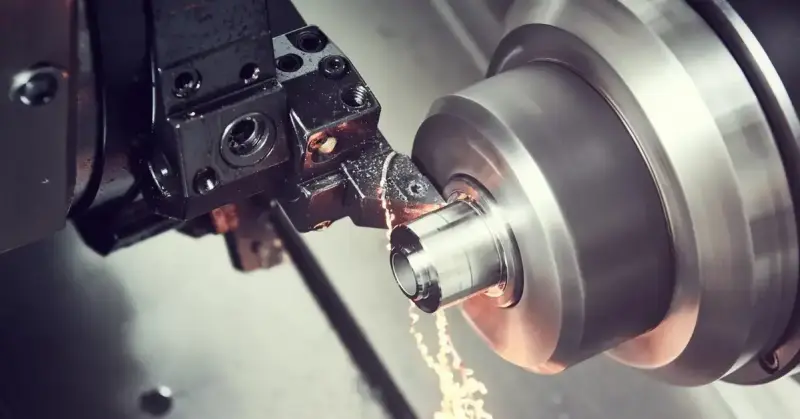
Overview:
CNC Turning entails rotating a workpiece on a lathe while a cutting tool eliminates material from the workpiece’s diameter. The cutting tool remains stationary. Cuts along the length of the workpiece. Industries such as automotive and aerospace employ turning as it delivers precision, effectiveness and adaptability.
These characteristics make it a key part of machining operations. Check out our top-quality CNC Turning Services if you need one.
Uses:
CNC Turning is employed to shape objects, like shafts, rods and disks. It can also form shapes and intricate details such as threads.
Read More:
CNC Machining Beginner Guide
CNC Machining vs Conventional Machining
2. Milling Process
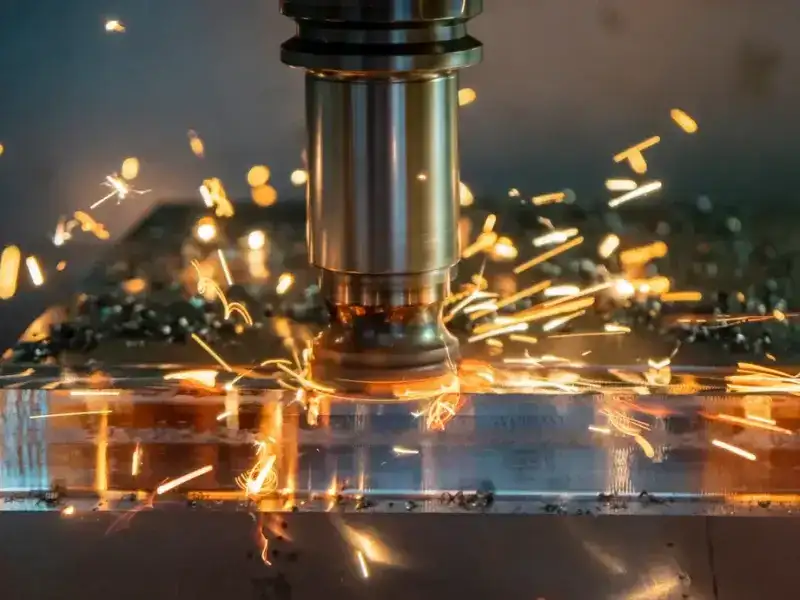
Method:
Milling employs rotating cutting tools to remove material from the surface of a workpiece.
Cutting tools feature cutting edges and are capable of moving along axes,enabling the fabrication of intricate shapes, slots, and pockets.
Uses:
CNC Milling comes with many benefits. It is a versatile technique employed across various industries for producing flat surfaces, gears as well as intricate components like molds and dies. Check out our top-quality CNC Milling Services if you need one.
Read More:
CNC Milling VS CNC Turning
Top 10 China CNC Machining Suppliers
3. Boring Process

Method:
Boring serves as a machining process that plays a role in manufacturing various products and parts. By using a rotating cutting tool known as a drill bit, boring creates holes in a workpiece. The drill bit is applied to the workpiece and rotated to eliminate material and form the hole.
Boring tasks range from hole-making to complex processes like counterboring and reaming. This manufacturing process is essential for establishing openings for fasteners and other components.
Uses:
Boring finds applications across sectors where holes are needed for fasteners, dowels, pipes, and electrical wiring. It is a part of manufacturing and construction activities in industries, like automotive, aerospace, medical and electronics. Various types of machines exist including CNC drilling machines that offer capabilities and precision levels.
4. Grinding Process
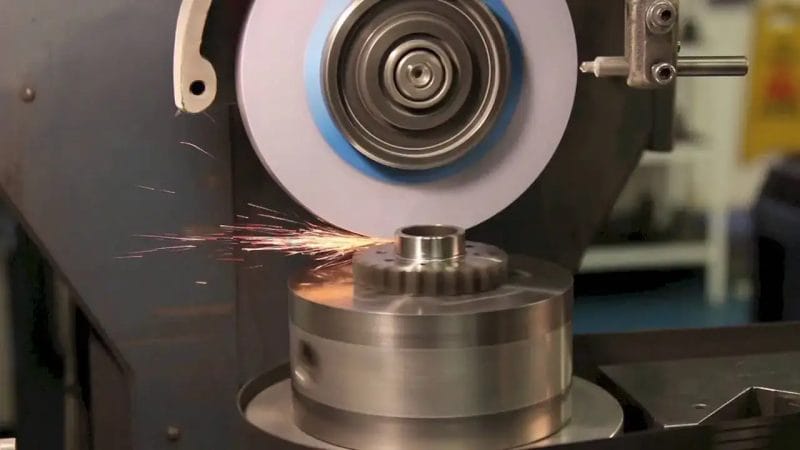
Method:
Grinding involves the use of grains to eliminate material from a workpiece surface. The grinding wheel rotates at speeds to achieve tolerances and smooth surface finishes. Industries such as automotive, aerospace, and toolmaking utilize grinding for manufacturing purposes. It is particularly effective for hardened materials or components with geometries.
Grinding techniques encompass surface grinding, cylindrical grinding, centerless grinding, and internal grinding — each offering capabilities and levels of accuracy. Overall, grinding serves as a machining method of producing high-quality components across various industries.
Uses:
Grinding excels in precision machining tasks involving hardened materials and finds applications, in tool making, aerospace engineering, automotive production and medical device manufacturing.
5. Planing Process
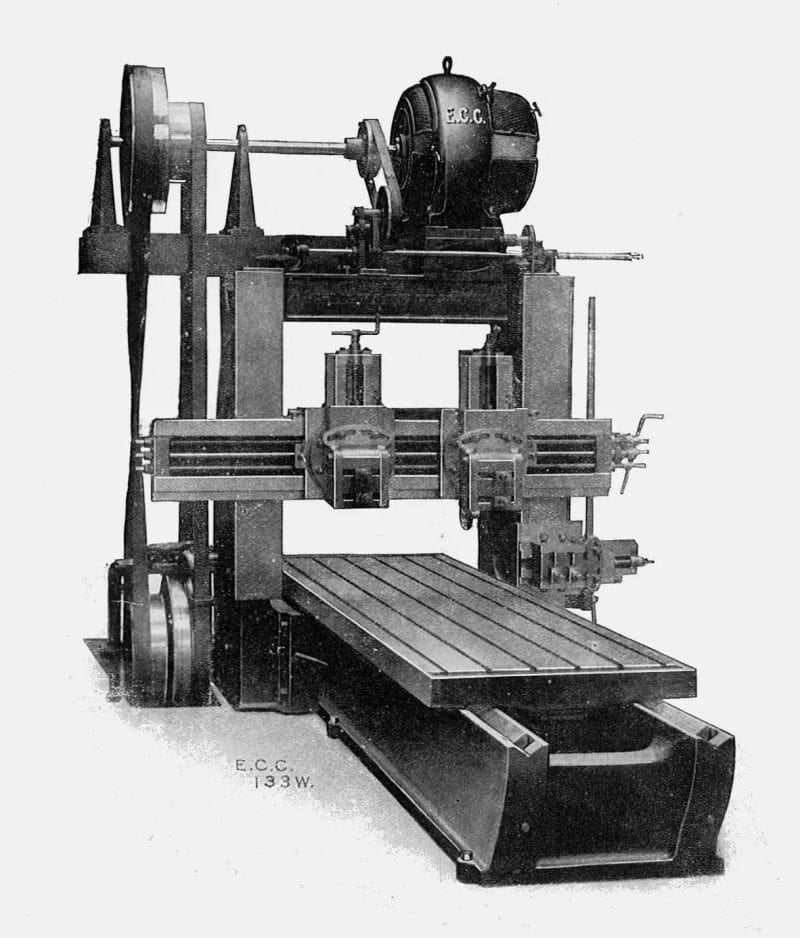
Method:
Planing involves linear material removal to create surfaces or reduce the thickness of a workpiece.
When working on a piece the tool moves across, taking away material bit by bit.
Uses:
Planing is often seen in woodworking and metalworking shaping parts, like panels, blocks, and boards.
6. Sawing Process

Methods:
Sawing involves cutting materials with a blade that moves back and forth or in circles to shape the material.
Uses:
Sawing is common in metalworking, woodworking, and plastic work. It is used to cut materials into pieces for easier handling and can create straight lines, curves, and angles.
7. Broaching Process
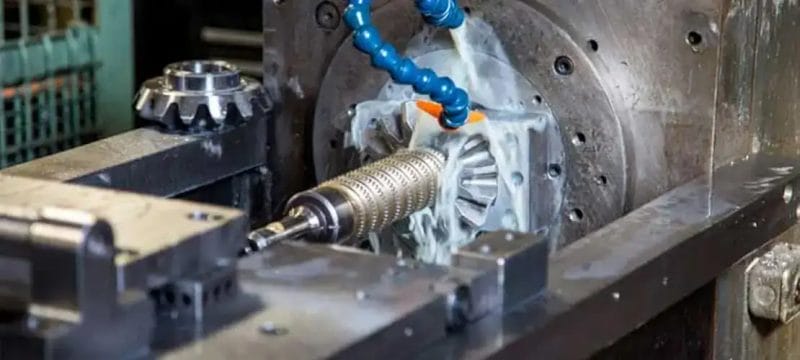
Procedure:
Broaching uses a tool with cutting teeth to remove material in a straight line. The tool is pushed through the workpiece to create shapes or features.
Uses:
Broaching is ideal for making shapes like gears, shafts, and pulleys. This method finds applications in the aerospace and machinery industries.
Overall, these manufacturing processes play a role in the production and construction industries. Each process has its functions and uses.
A wide variety of components and products are crafted with accuracy and efficiency. Traditional machining methods have their set of benefits like reliability, easy setup, and versatility in handling materials. However, they may lack the speed, precision, and capability to produce shapes when compared to machining techniques. Despite this, traditional machining remains an aspect of manufacturing as it offers cost solutions and produces a diverse range of components for various industries.
5 Types of Advanced or Unconventional Machining Processes
On the other hand, non conventional machining techniques, also known as advanced machining, employ innovative approaches to shape, cut, or finish materials with exceptional precision. Unlike methods that rely on processes such as cutting and grinding, non-conventional methods utilize thermal energy to eliminate material from a workpiece. Some notable non-conventional machining processes include:
1. Electrochemical Machining (ECM) Process

This method uses dissolution to remove material from the workpiece. It is particularly beneficial, for machining shapes and challenging materials like titanium and superalloys while ensuring precision and surface quality.
2. Laser Beam Machining (LBM) Process

LBM involves using a laser beam to either melt or vaporize material from the workpiece.
It is suitable for cutting, drilling, welding, and engraving types of materials. This technique ensures accuracy and minimal impact from heat.
3. Electron Beam Machining (EBM) Process

EBM employs a beam of electrons to eliminate material from the workpiece using energy. It finds applications in industries like aerospace and semiconductor manufacturing for the machining of features on materials.
4. Abrasive Jet Machining Process
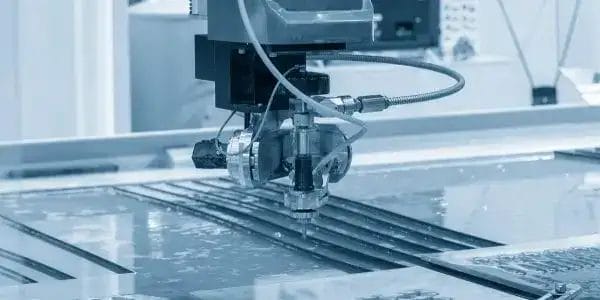
This method provides benefits, such as the ability to machine shapes and work with thin or fragile materials, as well as those with high hardness or brittleness. AJM does not create heat-affected zones, minimizing stress in the workpiece. This makes it ideal for machining delicate components or materials sensitive to heat.
5. Ultrasonic Machining Process
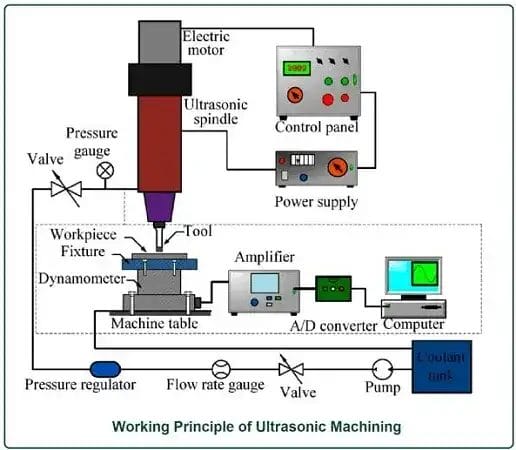
Ultrasonic Machining uses vibrations to remove material, particularly useful for machining hard and brittle materials while achieving high precision and excellent surface finishes.
Overall, nontraditional machining processes offer advantages including the capability to shape forms and handle delicate materials with hardened surfaces while minimizing tool wear and heat production. They also deliver precision and superior surface quality suitable for applications demanding tolerances and top-notch quality standards.
Non-traditional methods of machining may come with costs for equipment and operations making them less ideal for production due to slower speeds. However, they offer solutions for producing components and materials.
Difference Between Conventional and Nonconventional Machining Process
The main difference between conventional and nonconventional machining lies in their approach, costs, and application:
- Machinery Investment: Conventional methods like turning or milling require lower initial investments, while nonconventional techniques such as EDM or laser cutting demand higher upfront costs.
- Material Compatibility: Conventional methods work better with standard metals, while nonconventional methods handle advanced materials.
- Operational Costs: Nonconventional techniques consume more energy, leading to higher operating costs.
- Precision and Complexity: Nonconventional methods excel in achieving tight tolerances and complex shapes.
- Labor Costs: Skilled labor is crucial for nonconventional processes due to specialized equipment and programming needs.
Cost Comparison between Traditional and Non-Traditional Machining
When comparing the expenses associated with non-machining techniques, various factors need to be taken into account. These factors include the costs of equipment, ongoing operational expenses, material expenditures, labor charges, and any additional overhead costs.
1. Traditional machining processes, like turning, milling, drilling, and grinding typically utilize machinery such as lathes, milling machines, and drills. The upfront investment required for these machines is generally lower compared to some traditional machining approaches.
2. Non-traditional techniques such as laser cutting, electrical discharge machining (EDM) waterjet cutting, and ultrasonic machining often require costly equipment. The initial investment outlay, for these methods can be significantly higher compared to approaches.
3. Operational costs related to machining methods usually encompass energy usage, tooling expenses and the cost of coolant/lubricants. These costs can vary depending on the materials being worked on. The complexity of the parts involved.
4. Both traditional and non-traditional methods usually have material costs since they can handle a range of materials, including metals, plastics, and composites.
5. Labor expenses in machining consist of operator salaries well as any additional labor needed for setup procedures, changing tools, and handling parts.
6. Labor costs can fluctuate based on the complexity of operations and the skill set needed to operate and program specialized equipment used in methods. Skilled operators, with expertise may command wages.
7. Overhead expenditures like rent for facilities, insurance fees, and administrative expenses are typically incurred regardless of whether traditional or non-traditional machining methods are used.
8. Costs associated with techniques may include expenses related to electricity usage, materials and maintenance of equipment. The specific method and its application can influence the variability of these costs.
9. Certain unconventional methods may necessitate materials. Have limitations that impact material expenses.
10. To machining unconventional methods may also incur additional expenses for facility maintenance, insurance, and administrative overhead.
Ultimately determining the cost machining approach will hinge on factors such as the particular application, production volume, material needs, and desired precision level.
To Know More About Machining Cost, feel free to check this post: CNC Machining Cost: Ultimate Guide
Which Machining Technique Offers Better Value?
In terms of cost-effectiveness, factors like investment, production volume, labor costs, waste generation, and time taken, all impact how economical a particular machining method is.
The choice between conventional and nonconventional machining will depend on various considerations, including material compatibility – traditional methods are often more suitable for working with metals.
When working with materials that are unconventional methods, like EDM can be beneficial. Project requirements play a role in determining the machining process to use. Some processes are more effective for achieving tolerances or complex shapes which can impact costs.
Considering the costs of tooling and equipment is crucial. Conventional machining methods typically require tools and equipment but may involve higher initial investment expenses.
Certain machining techniques may require labor. Consume more energy leading to increased operating costs.
Reducing waste is essential for cost efficiency. Processes that produce scrap material can help lower costs.
By assessing these factors, manufacturers can streamline costs. Improve production efficiency.
Yijin Hardware, Your Optimal Option for CNC Machining
When selecting a CNC machining partner, it’s important to consider qualities and attributes that contribute to successful collaboration and high-quality results. Look for a company with industry experience and expertise, such as Yijin Hardware. We prioritize stringent quality management systems and certifications to ensure quality control procedures and compliance with industry standards.
Yijin Hardware has a background in working with materials and providing tailored solutions. Our approach is adaptable to meet the requirements of each project. Good communication and teamwork are key for keeping customers informed throughout their projects.
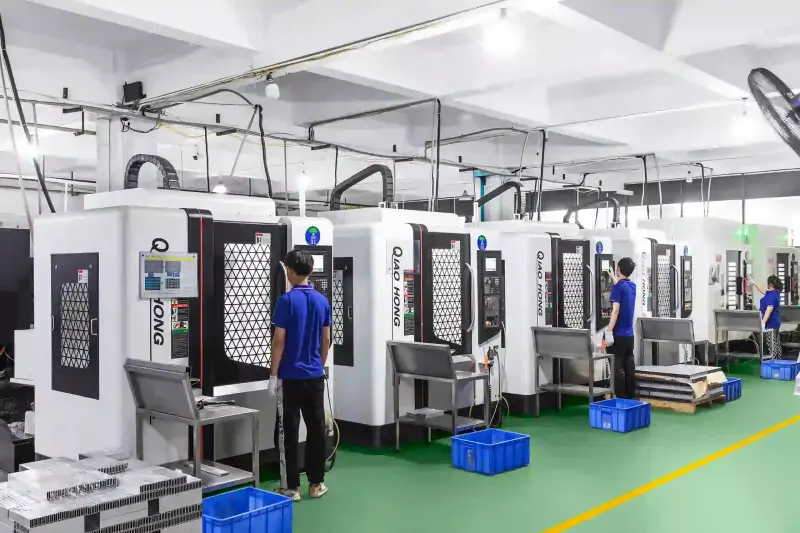
Our company provides testing services to verify designs. We streamline processes before moving to production. We are dedicated to delivering top-notch customer service with assistance. Our proactive communication strategy deals with any issues or concerns.
Yinjin Hardware values the quality of its offerings. By focusing on these aspects Yijin Hardware ensures a partnership that aligns with your project’s requirements and expectations.


